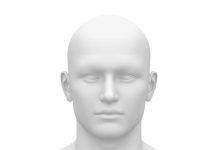Often, physicians get most of the credit for successes, but it’s a team conformed by physicians, nurses, nutritionists, kinesiologists, paramedics, etc. – and every single one of them is working for the patient. Today, we want to talk about one of the most important members of that team: we are going to talk about nurses, and how Augmented Reality could really benefit their training.

A formal investigation was done by researchers from the Department of Nursing of the Chang Gung University of Science and Technology in Taiwan. Most of the tasks and reactions from the nursing personnel come from many protocols, such as taking a blood sample, or helping a patient get dressed or cleaned in the bed, or taking vital signs; they base themselves on a very specific step by step procedures. This seems like a very interesting subject to approach with Augmented Reality.

The point of this investigation is to create a path towards creating digital-based learning resources, improving teaching strategies in order to gain interest from the nursing students and to help them retain knowledge in the preclinical stage of their training to adapt themselves better to the clinical setting, reducing the learning curve, and resulting in more day-one functioning personnel in the clinical setting. The program designed by these investigators was divided into two phases: specialized classroom facilities and cloud computing / mobile-learning. Augmented Reality can be applied to both of them, but especially to the second phase of the program, where students could receive all the information they need about their protocols in an Augmented Reality format, making the information more accessible to them and easier to understand.

Let’s take, for instance, measuring vital signs. The nurse has to be taught to locate the ideal position for the arm cuff of the blood pressure monitors, the ideal technique; or maybe how to detect the ideal pulse. We believe that paired with haptic feedback, this could be a premium method for classes with a large number of students or even an important tool for students that want to check the information more in depth in comfort of their homes. Everything is possible with Augmented Reality!

Be it through a head-mounted device, or through a smartphone powered by ARCore or ARKit, Augmented Reality could be implemented in many educational scenarios in a standardized way, and we certainly applaud the effort of the educational institutions to evaluate and try to find ways to implement these alternate technologies into their methods. It’s not always easy to change, but Augmented Reality is paving the way for it.
Do you think there are other situations where AR could be implemented? Let us know in the comments section.
Source: NCBI







